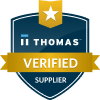Components in safety gear, power tools, and industrial equipment often combine metal inserts, sensors, or threaded bushings with structural plastic. Advanced insert molding produces high-strength parts in a single cycle, minimizing material use and assembly steps. When plastics manufacturers integrate insert molding into their tool design, they achieve durable, reliable components that perform under extreme loads.
Why Insert Molding Improves Strength and Reliability
Traditional assemblies might mold a plastic housing, drill holes, and fasten metal hardware afterward. Each extra operation introduces alignment errors, adds weight, and generates scrap. Insert molding places pre-formed inserts such as bushings, coils, or metal clips, directly into the cavity before injection. The molten resin then encapsulates the insert, locking it in place without secondary fastening. This fusion of materials yields a composite that withstands shock, vibration, and heavy loads far better than mechanically assembled counterparts.
Material Selection and Insert Compatibility
Choosing the right resin and insert material pairing is critical for strength. Glass-filled nylon or polyamide blends offer high tensile strength and fatigue resistance, while polycarbonate alloys deliver impact toughness around delicate inserts. Metal inserts must match the resin’s thermal-expansion characteristics to prevent stress concentrations. For example, a brass threaded insert overmolded with glass-filled polyamide 6.6 ensures the insert remains centered under load, avoiding pull-out or loosening over repeated torque cycles.
Design Considerations for High-Strength Insert Molding
Achieving maximum strength requires careful attention to wall thickness and rib geometry. Designers often use ribs to transfer load from the plastic to the embedded metal, reducing bulk and weight while maintaining rigidity. Gate location is also important; placing the gate near the insert promotes uniform flow and packing pressure around high-stress zones. Vents eliminate trapped air, preventing voids adjacent to inserts that could undermine mechanical performance. When multiple inserts are used, tools incorporate positioning features, such as pins or vacuum fixtures, to guarantee each insert sits within ±0.1 millimeter of its target.
Process Controls That Enhance Part Integrity
Advanced presses equipped with cavity-pressure sensors and real-time monitoring ensure each shot follows the validated profile. During the fill phase, pressure sensors detect when the resin has reached the insert, allowing the system to switch to the pack phase at exactly the right moment. Maintaining consistent pack pressure prevents sink marks and voids around the insert footprint. Automated mold-temperature control keeps the tool within a few degrees of the setpoint, ensuring predictable shrinkage and long-term dimensional stability. These controls raise process capability (Cpk) above industry benchmarks, reducing scrap in large-volume programs.
Case Study: High-Load Industrial Coupler
An industrial coupler required a stainless-steel spline insert overmolded with a high-temperature polyphenylene sulfide (PPS) to withstand continuous 125 °C operation under cyclic torque loads. By embedding cavity sensors near the spline interface, the molder optimized the pack time so that PPS packed fully around the splines without creating excessive residual stress. The resulting part endured over 100,000 engagement cycles in validation testing with no insert pull-out and zero crack initiation in the plastic. This single-shot process eliminated a secondary press-fit step, saving 30 seconds per cycle and cutting annual labor hours by 800.
Cost and Sustainability Advantages
Insert molding reduces material waste by eliminating the downgrading of failed parts and minimizing secondary operations, which often generate metal chips and excess trimming. Reclaimed PPS regrind can be reintroduced at controlled percentages without compromising strength around inserts. Automated insert feeding systems on vertical or horizontal presses stage inserts precisely, lowering scrap from misplacements to near zero. Fewer process steps also translate to lower energy consumption, reducing the overall carbon footprint for high-volume runs.
Collaboration with Plastics Manufacturers
Successful high-strength insert molding relies on close collaboration between design engineers and plastics manufacturers. Early-stage design reviews ensure that insert geometry, resin choice, and tool design align with target performance metrics. Moldflow simulations can predict flow around complex inserts, identifying potential knit-line or weld-line locations that require design adjustments. Plastics manufacturers with in-house tool rooms expedite prototype iterations, verifying insert fit, resin adhesion, and part performance before scaling to full production. This partnership accelerates time-to-market and minimizes rework costs.
Future Trends in Insert Molding
Emerging techniques include hybrid over-molding, where continuous-fiber thermoplastic sheets integrate with insert-molded features to create ultra-lightweight, high-load structures. Additive-manufactured conformal-cooling channels in insert molds shorten cycle times by up to 20 percent, improving productivity on thick-section parts. Real-time data analytics will further refine pack profiles based on live feedback, adapting to minor material lot changes without manual intervention. As recycled-performance grades mature, stainless-steel and aluminum inserts will work seamlessly with sustainable resins to deliver both high strength and reduced environmental impact.
Advanced insert molding delivers high-strength, high-reliability components by merging metal, electronics, or subassemblies directly into molded plastic. With the right resin, precision tool design, and closed-loop process control, plastics manufacturers produce durable parts that excel under heavy loads. To explore high-strength insert molding solutions tailored to your next program, contact Hansen Plastics Corporation for design consultation, prototype tooling, and turnkey production planning.



